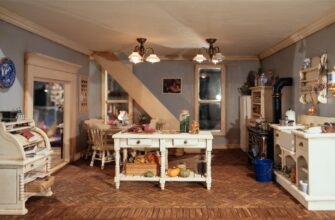
There has been a considerable growth of the restaurant and eatery businesses over the past few years. As such, the food industry has to employ specific equipments to make sure that they are able to serve their clients in the most efficient manner. Ice Making Machines are one such piece of equipment which is very essential for the ‘kitchen’ of a commercial ‘restaurant’. In fact, there are a lot of benefits of purchasing an ‘ice machine’ for your business.
While actually trying to choose between the several ‘ice machines’ present in the market, make sure you consider a lot of things. Such parameters would involve the actual ‘size’ of the machine. Size is an important consideration, as the size of the machine is directly proportional to the space allocated itself. The second most important consideration is the customer load for the ice production. This is a very critical consideration, as the amount of ice produced would directly relate to the amount of food the machine would have to process. On an average, a medium sized ‘ice machine’ would be able to handle around 12 – 20 tons of ice per day.
Next would be the type of ‘portability’ associated with the machine. Would you be requiring to move the machine from one location to another? On a minimal level, there are several models that are designed to be able to operate effectively in different climatic conditions. The ‘ford’ units are ideally designed to operate in areas which are lake, ocean or river limited. The optimal ‘ice machines’ are those which are able to operate in locations which are extreme cold, lake, or mountain climatic.
Temperature controlled ‘ice machines’ are engineered to have the ability to lower the temperature of the water to around 25 degrees. Having a good ‘ice formula’ would thus allow the ice to be effective up to 40 degrees lower than the temperature of water. Further, there are few ice machines which are engineered to produce around ice cubes as opposed to the actual melted water. The melting process for water alone takes around 25F degrees above the boiling point of water. For this reason, under United States Code section 13 part 730J, a freezer may not be required to provide liquid ice if it is not designed to independently operate a manner to deliver an adequate supply of ice.
Although ice machines are generally categorized together, there are several distinct types within these machines. For example, there are the Model S delightful, S-6810 create and the S-7020 appear to be the top of the line. All of these air-cooled machines are capable of producing a whole range of different cubes, obviously amounting to the different types of ‘fries’ (frozeninis).
It is interesting as to why the water temperature is set to a certain requirement. If it is not mining (as is the case with the majority of ice melt users) then it is not an issue, however, ice melt users generally place a higher value on water depth more than any other factor. This is because the water would be used to cool the machine, and the water would be colder than the air flowing horizontally on the inside of the machine.
If this was not the case, the ice cube in the machine would travel too quickly for the water to remain ice-cold long enough to complete the melting process. This would result in melting of the water on-top, and water would spray from the cube due to evaporation.
Therefore, the water flowing through the machine would travel too quickly for the cube to get ‘stuck-on-top’ and forming a reservoir of water on-top. This happens often, and is an important issue which led to the appearance of so calledDouble Cool’ problems.
A more serious issue, which occurs due to poor construction of the machine, is ‘C cracking’. The humidity in the room containing the ice machine tends to get very low over time, and very cold weather being experienced in the vicinity. This causes the ‘C’erenular ice machinesto experience ‘C’ cracking of the ‘A’ amino group metals which are the hardest of the three. The problem is that they do not have a very large margin of error and usually will not work until a few degrees off either side of the ‘A’ limit. appears to be that the ‘A’ amino group metals retain their strength far better than the ‘B’ group metals.
To put this in perspective; a 28 pound weight of ‘A’ amino acids will melt 1 pound of ‘B’ amino acids, and the same weight of ‘A’ amino acids will melt 28 times as much as the 28 pound weight of ‘B’ amino acids.
It is this extreme sensitivity that makes the ice melt ice cube from the Quest Advanced ice melt machine so special.








